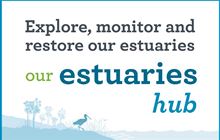Seagrass and mangrove extent
Introduction
This interactive map shows the current and historical extent of seagrass and mangroves in New Zealand. The project is a repository for any survey work undertaken.Why map seagrass and mangroves
Seagrass and mangroves form highly productive and valuable ecosystems. As well as providing habitat for biodiversity they provide many services for people.
They help maintain water quality, act as nurseries for recreational and commercial species of fish, and help us with climate change challenges. They protect our coastlines from storm surge and are also champions for sequestering carbon.
Seagrass is also of conservation interest as it is listed as an “at risk” species.
About the project
This map contains surveyed seagrass and mangrove spatial information primarily collected by regional councils (as part of their state of the environment monitoring) but also from surveys undertaken by DOC, NIWA and other agencies. Information that does not have complete metadata is not included in this map.
Since 2014 DOC have been working with councils around the country to create this repository for New Zealand’s seagrass and mangrove data. This data was brought together to create one standardised and referenced national dataset. This was no easy feat as it required sorting through over 200 individual datasets with different metadata fields and symbology – the seagrass layer alone contains over 18,000 polygons.
Part of this standardisation was presenting the information in discrete density classes: Low (<20%), Medium (2-50%), High (>50%) with “Present” recorded when there was no density information available.
Some of the surveys captured have more detailed density information. This can be found in the reports.
Having this information in one place is beneficial for many reasons including; reporting on trends for these species, helping with management decision making and assessing priorities for protection and restoration.
A summary of the mapped information in this project is summarised in the Ministry for the Environment's report Review of New Zealand’s Key Biogenic Habitats.
How you can add to our knowledge
If you have new, or historical, survey data please see the information on the SeaSketch page.
Also, if you come across seagrass in any areas not displayed in these maps we’d like to know about that too! This will help us understand the distribution of seagrass and to tailor additional survey effort.
SeagrassSpotter, a global initiative developed as part of Project Seagrass, is the place we’d like you to record these sightings. Take photos of seagrass and upload them via this App.
Visit the project website to download the free app and get started.

Seagrass spotter app

Seagrass
Related resources
Mangroves
- The New Zealand mangrove: review of the current state of knowledge (PDF, 1,100K)
- Use of mangrove habitat by threatened or at risk birds (PDF, 395K)
- Ocean wealth mangrove restoration maps
Seagrass
- New Zealand seagrass: general information guide (PDF, 31,000K) This is a very large file.
- Management and conservation of seagrass in New Zealand (PDF, 5,009K)
- Seagrass meadows as biodiversity and productivity hotspots
- The role of sediment in keeping seagrass beds healthy
- Comparing seagrass meadows across New Zealand



